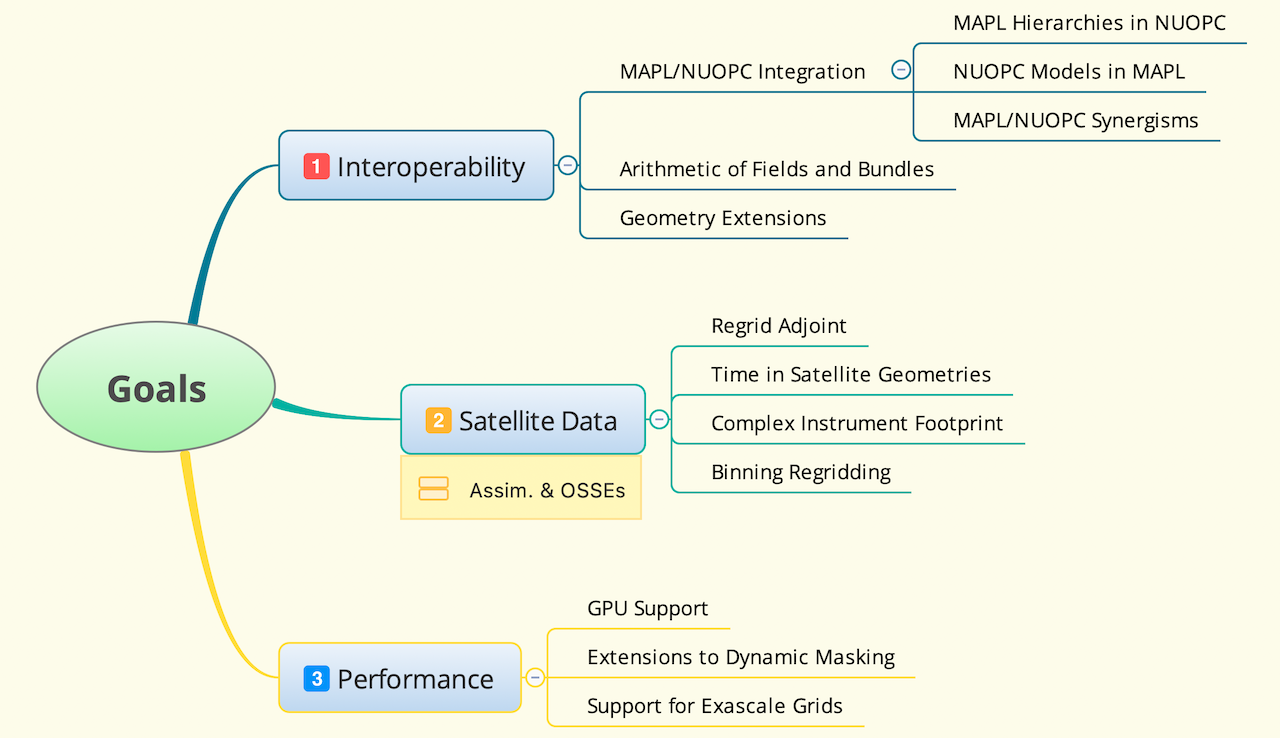NASA GMAO Member Tom Clune Part of Accepted Proposal Team to Update Computing Capabilities and Software Infrastucture
4.10.2024
A proposal submitted by a team including NASA GMAO member Thomas Clune was recently accepted as part of the ROSES-23 MAP call. The following is a description of the work to be carried out:
A common software infrastructure is the centerpiece of the US strategy for advancing climate modeling {NAP13430}. Under NASA funding, the Earth System Modeling Framework (ESMF, {Hill2004}) was initiated in 2002 as three Cooperative Agreements with participation from multiple agencies and academia. Today, the ESMF is the main technology through which interoperability of geoscience modeling components is being implemented in the US.
Back in the early 2000s, the Modeling Analysis and Prediction usability layer (MAPL) was developed by NASA's Global Modeling and Assimilation Office (GMAO) to address gaps in the ESMF as it was being introduced into the GEOS model. Similarly, in 2010, the National Unified Operational Prediction Capability (NUOPC) Interoperability Layer, which introduces a set of standard component interactions, was created under an agreement between NOAA and Navy operational centers and a set of research partners.
Both MAPL and NUOPC provide complementary capabilities, with NUOPC emphasizing coupling of larger model components and concurrent execution, while MAPL provides a more seamless approach for granular coupling, with flexible and mature I/O capabilities that can handle on-demand ingesting and re-gridding of boundary conditions and emissions, and the construction of complex file specifications demanded by reanalyzes (e.g., MERRA-2, {gelaro_modern-era_2017}). This proposal is a continuation of previous NASA funding aiming to leverage NUOPC and MAPL capabilities in each ESMF usability layer toward a potential unification.
The main goals of this proposal revolve around extensions of the ESMF, NUOPC and MAPL in the areas of interoperability and satellite data assimilation with critical performance optimizations. Goal 1 focuses on extending each layer to support useful capabilities available in the other. Goal 2 focuses on extending core ESMF capabilities to provide better support for observational data. Goal 3 focuses on improving core ESMF performance including the use of GPUs, improvements to dynamic masking, and improved scalability to exascale resolution computational grids.


